
Nissan Qashqai e-Power Review

Introduction
Many are concerned about moving to an electric future, so Nissan is trying to make the transition easier with its clever e-Power technology. It’s a hybrid by any other name but uses the combination of a petrol engine and electric motor in an unusual - and currently unique - way to make more of both. We see if it’s a solution to the problem or just an added complication.
Select's rating score* - 3.9 / 5
At a Glance
The Qashqai has been the darling of the motoring world since its introduction in 2006, single-handedly building the family SUV sector while also saving Nissan. Now on its third generation, as the rest of the industry goes electric, it feels like the Qashqai is falling behind the times.
To put that right, and not to take too much of the limelight from the all-electric Ariya SUV, the Qasqahi e-Power gets a tricky hybrid powerplant that’s unlike anything else on the road. It promises efficiency, performance and refinement in a package that won’t alienate conservative buyers.
Elsewhere, it retains all of the hallmarks of the Qashqai, so it’s pretty spacious, quite comfortable and reasonably nice to drive. In a sector deep in talent, that’s possibly not enough to keep up, so is the new drivetrain the thing to make the difference? We drive the Qashqai e-Power and find out…
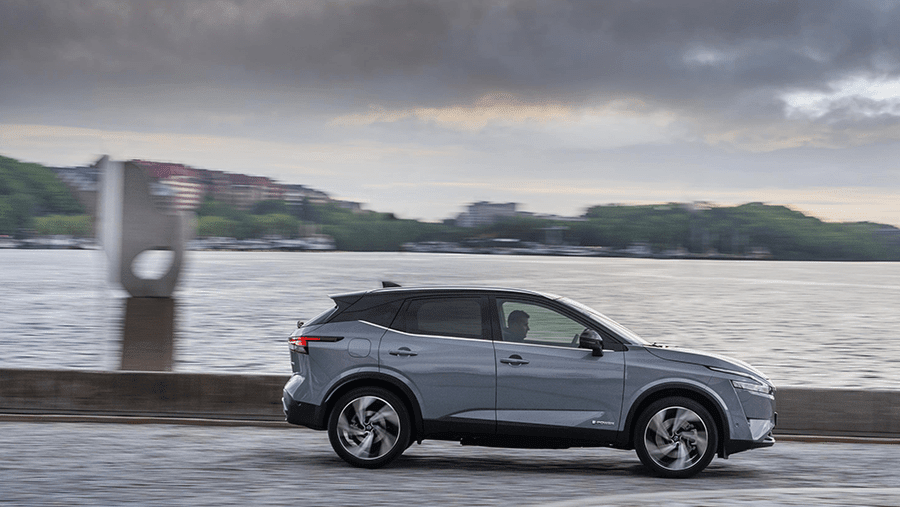
Key Features
While we like the Qashqai, it’s let down a little by a breathless engine with a clunky manual gearbox or a whiny CVT automatic. Before we get to what makes the e-Power work, it’s a pleasure to say that the tricky tech onboard puts that right.
So what’s going on under the bonnet of the e-Power to warrant the dramatic-sounding name? The ‘e’ gives the game away a little. There’s a 190hp electric motor under the bonnet, and that unit drives the car. Behind it is a 2.1kWh battery pack that provides the energy, but if you’re paying attention, you’ll have already spotted that 2.1kWh is tiny when the likes of the Kia Niro EV are fitted with a 68kWh pack. What gives?
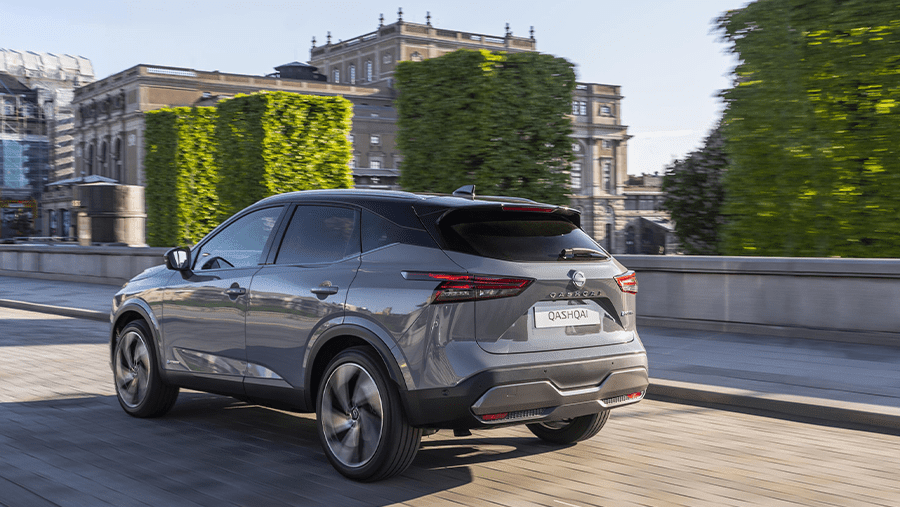
Well, there’s also a 1.5-litre petrol engine under the bonnet, but this never drives the car. It acts as a generator, creating electricity to keep the battery charged so that it can power the motor. That means it can run at the most efficient speeds needed to generate the energy, regardless of what’s happening on the road, and keeps you moving long after a typical EV would have run out of charge.
It’s like driving an electric car that just happens to be powered by petrol. I’d love to have been in the meeting where that was pitched…

Performance & Drive
Think of this as an electric car. In fairness, if it weren’t for the distant rumble from the 1.5-litre petrol engine (or generator), then you’d never know it isn’t, as it’s as smooth and brisk as any of the myriad electric cars that have arrived recently.
Instant acceleration from the electric motor leaves the Qashqai feeling zesty in town, where Nissan has focussed much of its efforts. The firm knows its customers, and around 75% of a Qashqai’s time is spent in urban areas, so that’s where it works best. A distinct lack of gears - you don’t need them on an EV - makes progress smooth and uninterrupted, leaving the urban crawl almost relaxing.
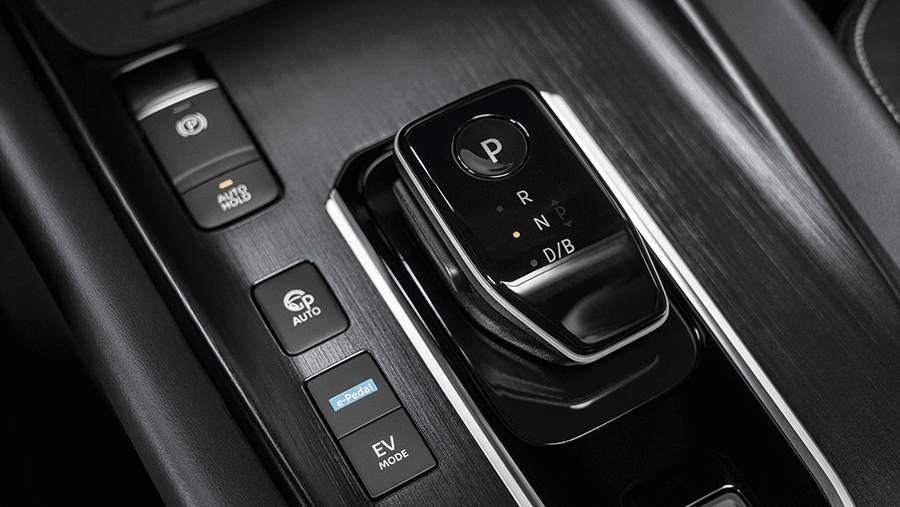
A button marked ‘e-Pedal’ allows for one-pedal driving. This cranks up the regenerative braking - that’s the system that gathers energy lost under braking and sends it back to the battery - so that lifting off the accelerator slows the car quite dramatically, right to a stop. It’s more efficient, saves wear and tear on the brakes, and is a breeze to use once you get used to it.
Venture onto the open road, and the Qashqai is fine. Nothing more, nothing less. It remains utterly safe and predictable, even when pushing the limits, with sensible performance levels and confidence-inspiring handling. It’s not, by any measure, engaging and entertaining, but that’s not the point of the car.
With a 0-62mph time of 7.9 seconds, it’s the quickest sprinting Qashqai so far, but it never feels like it. Linear, progressive and smooth, certainly, but never pushing-you-into-the-seat quick.
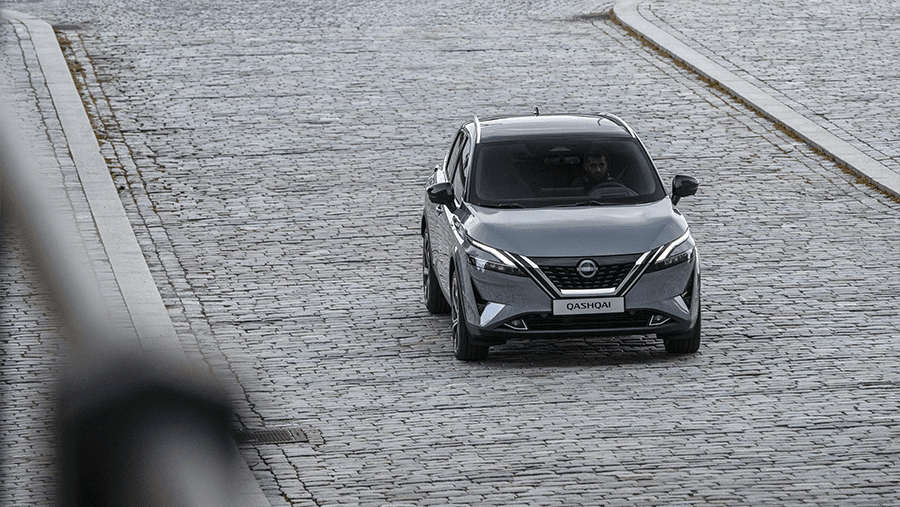
Running Costs
While the Qashqai e-Power might behave like an electric car, it isn’t one. You’ll need to put petrol in it, which will cost more than electricity, even with the price cap rocketing.
Under official WLTP testing, 53.3mpg is possible, which is good but not enough to get excited about. After a day of driving around Stockholm's gentle, flat roads and the surrounding countryside, with its low speed limits and enforced relaxed attitude, the onboard computer showed just 47mpg. As a comparison, my wife’s journey in a current 1.3-litre petrol Qashqai across East Anglia returned 48mpg.
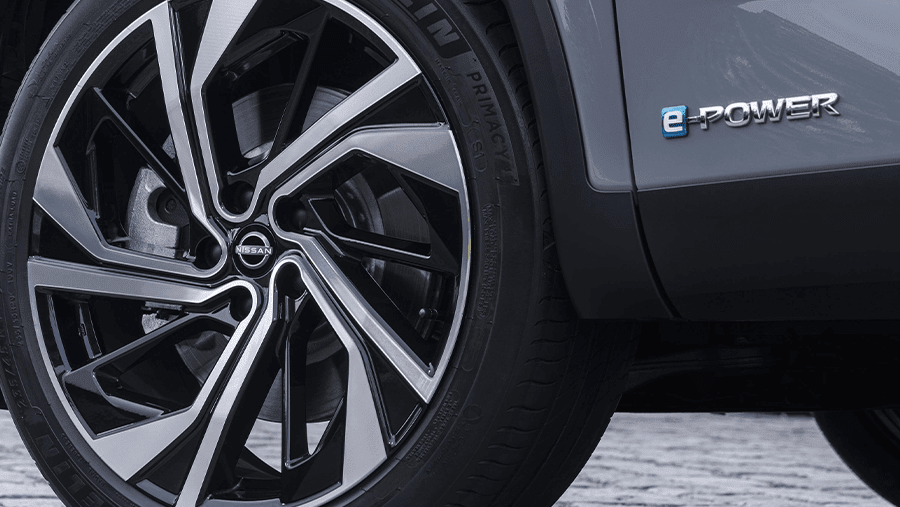
It’s also a little more expensive to buy, which is currently reflected in monthly leasing rates, although it’s competitive with the likes of the Ford Kuga. Company car users will appreciate the 119g/km of CO2 figure, which results in a reasonably low BIK burden of 28%.
All Nissan’s are covered by a three-year warranty, limited to 60,000 miles, which should see most through a lease agreement, although many other manufacturers offer longer cover. Servicing is required every year, or 18,000 miles. There’s also three years of breakdown cover included, so, should the worst happen, you won’t be left stranded.

Interior
Nissan has taken the opportunity to update the interior of the Qashqai, but only slightly. Most noticeable on our test model is the large 12.3-inch infotainment screen in the centre of the dashboard, complete with the latest version of Nissan’s software. It’s still not the best on the market; the screen is clear, with bold graphics, but it’s not always intuitive and can lag behind your prods and touches. It’s a marked improvement on what’s in the rest of the Qashqai range, though, and the update will make its way to other models in time.
It’s loaded with equipment, although that’s partly because there’s no ‘entry-level’ model in the e-Power range. Starting with Acenta Premium grade means you’ll get heated door mirrors, dual-zone air conditioning, a reversing camera, 18-inch alloy wheels and an 8.0-inch version of the infotainment centre.
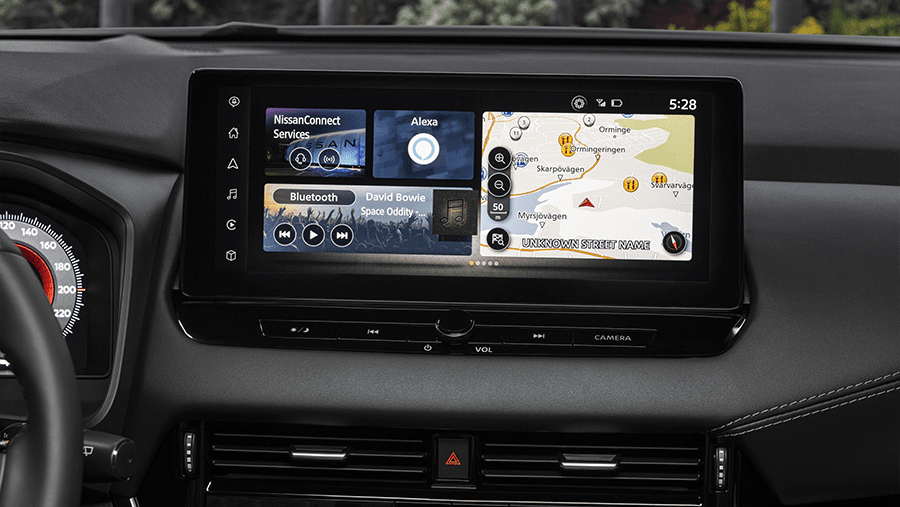
Space for all is about average for the sector, so it’ll suffice for most people. Headroom gets a bit tight, especially if you’ve ordered the panoramic sunroof. Access to the rear seats is notable, though, as the rear doors swing open to 85 degrees, making getting kids in and out of a child seat easier.
The boot is far larger than the previous generation Qashqai’s offering, but at 504 litres, it’s not exactly cavernous compared to some more spacious rivals.
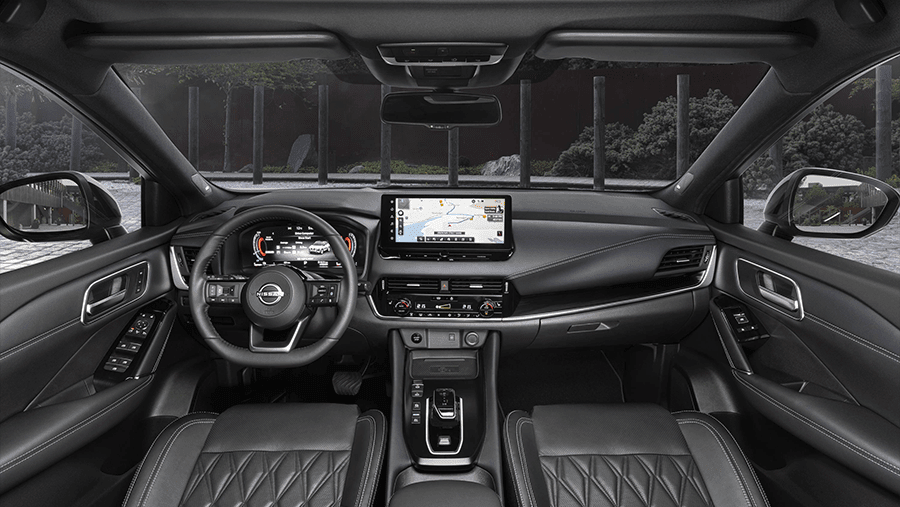
Safety
Euro NCAP recently put the Nissan Qashqai through its demanding safety testing, giving the family SUV a full five-star result. Protection of occupants in the car, both child and adult, is excellent, with notably high scores for active safety features.
Though the e-Power hasn’t been specifically tested, as it shares much of the same structure and systems as the regular Qashqai, there’s no reason to suspect it’ll score any differently.

Nissan is proud of the safety systems it places on its cars, and rightly so. While a handful of the systems might be a little too nannying at times, overall, it’s a comprehensive suite of aids that work together well.
Chief amongst the tech are the likes of automatic emergency braking with pedestrian and cyclist detection, junction and reverse traffic alerts, lane keeping assist and departure warning, blind spot monitoring with intervention, and automatic high beam lights, amongst countless other items.
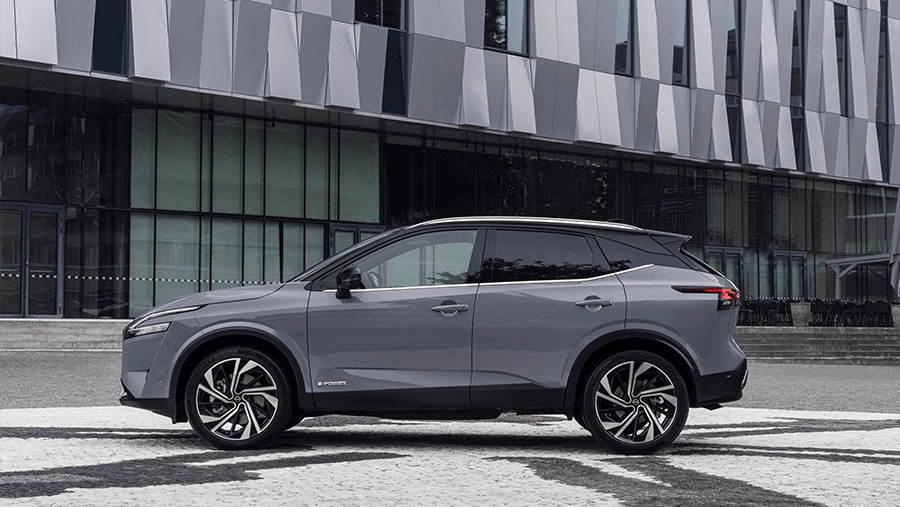
Options
Nissan has quietly dropped the entry-level Visia model from the e-Power range, which means the trim levels now rise from Acenta Premium (no, there’s no Acenta trim) through N-Connecta and Tekna, and on to Tekna+. No, we don’t understand the names either.
While every Qashqai has a good smattering of equipment, it’s the N-Connecta where there’s a real sense of value. On top of everything you might expect, this model gets the 12.3-inch infotainment centre, 360-degree cameras, parking sensors, and wireless Apple CarPlay. Tekna adds a head-up display, electrically adjustable and heated seats, a powered tailgate, self-parking technology, and 19-inch alloy wheels. Tekna+ adds even bigger wheels, a Bose sound system and quilted leather trim.
Options are few and far between - Nissan expects you to choose the right trim level rather than pick and mix options.

Rival Cars
While the Qashqai started the crossover trend, merging the benefits of the hatchback with the versatility of the SUV, everybody else has played catch up over the last 16 years. Now there’s a veritable plethora of rivals, leaving the Qashqai off the top of the sector’s sales lists for the first time in a long time.
The Kia Sportage is a thoroughly modern take on the medium SUV, balancing cutting-edge design with space and usability. It’s also available in plug-in hybrid form, so there’s real zero-emissions motoring to be had, although that version is anything but cheap.

Handling prowess is the Ford Kuga’s highlight, which is unsurprising as it’s based around the excellent Focus chassis. It’s well equipped with a spacious cabin but doesn’t feel special.
Skoda keeps things simple with the Karoq, creating an utterly conventional but utterly convincing SUV. It’s comfortable and well equipped, and easy if unexciting to drive. Avoid the 1.0-litre, though, as it’s a little underpowered.

Verdict
Reading all of the above, switching to a complex electric drivetrain doesn’t appear to have done much for the Qashqai. While some real-world but still anecdotal fuel economy results might leave you wondering why you should bother, there are objective benefits to be had by embracing e-Power.
For a start, we’ve only touched on the regular Qashqai’s engines, and they’re… not great. The extra performance and refinement that e-Power brings make it the very best version of the Qashqai so far.
It’s significantly better to drive than a traditionally engine Qashqai, especially in urban areas, where (statistically, at least) you’ll be spending most of your time.
That might not be worth the £2,000ish uplift from the 1.3 petrol models, but the monthly lease rates mitigate that. Combined with lower Benefit in Kind rates for business users, it could end up being the best for less.
Where to next?
View our latest Nissan Qashqai e-Power Leasing Deals - from just £292.79 per month inc VAT**
Looking for a great leasing deal? Check out our incredible range of Special Offers
New Hatchback? Read our latest Car Reviews and find the right model for you
Want to know more about leasing? Take a look at our comprehensive Leasing Guides
Interested in everything motoring? Why not catch up on all the latest Car Leasing News.
*Score based on Select’s unique meta score analysis, taking into account the UK’s top five leading independent car website reviews of the Nissan Qashqai e-Power
**Correct as of 30/08/2022. Based on 9 months initial payment, 5,000 miles over a 48 month lease. Initial payment equivalent to 9 monthly payments or £2,635.11 Ts and Cs apply. Credit is subject to status.




















